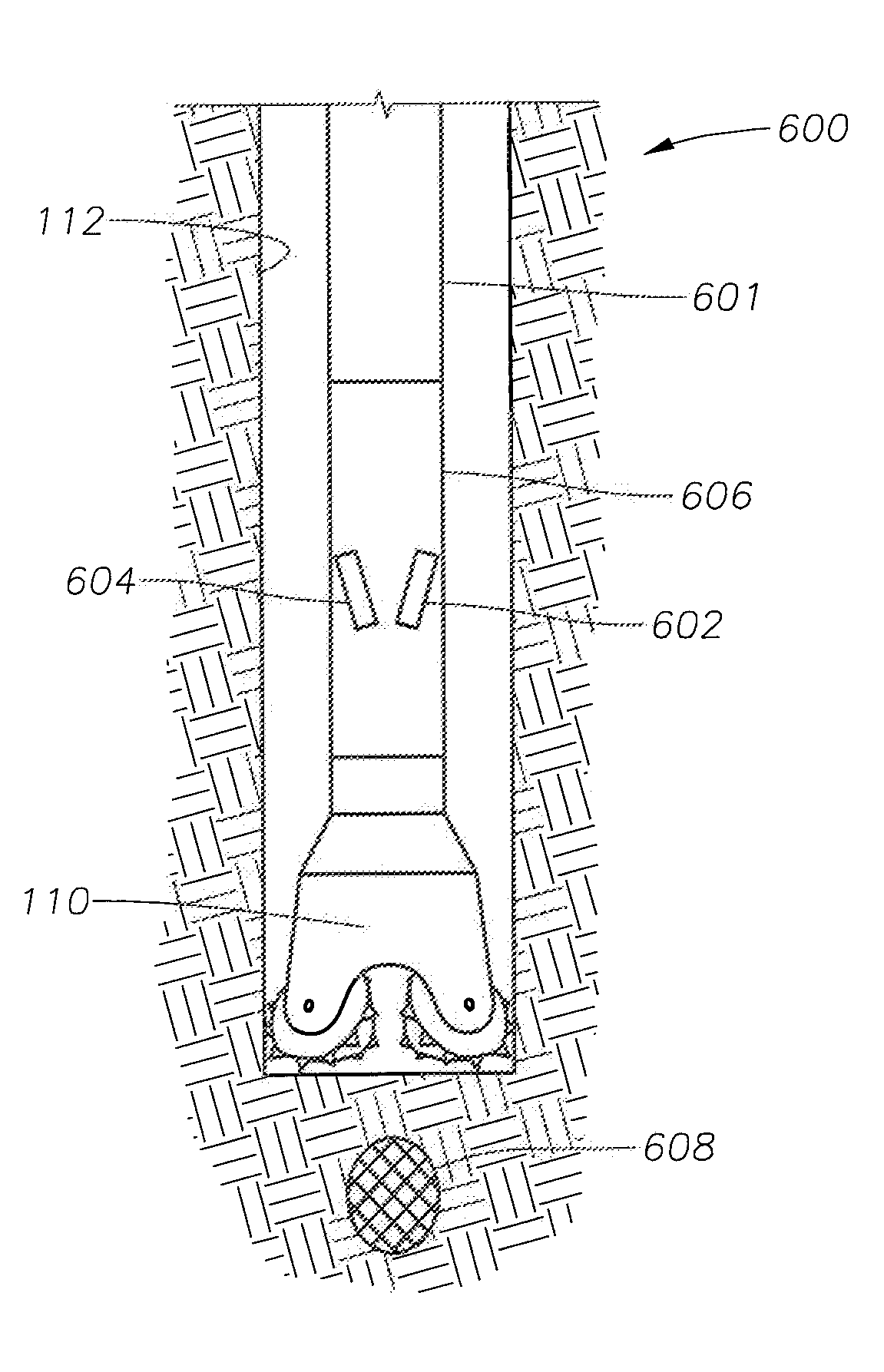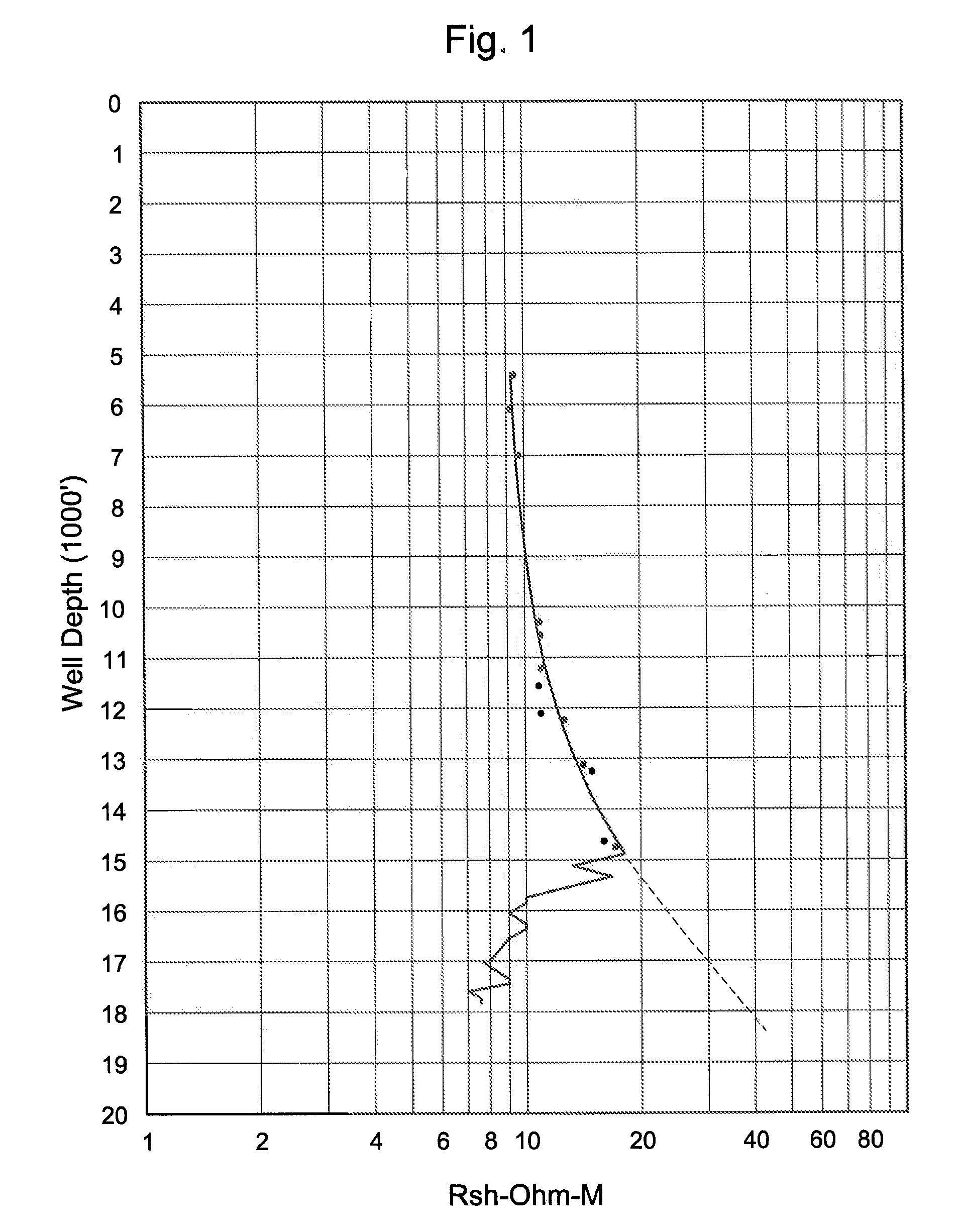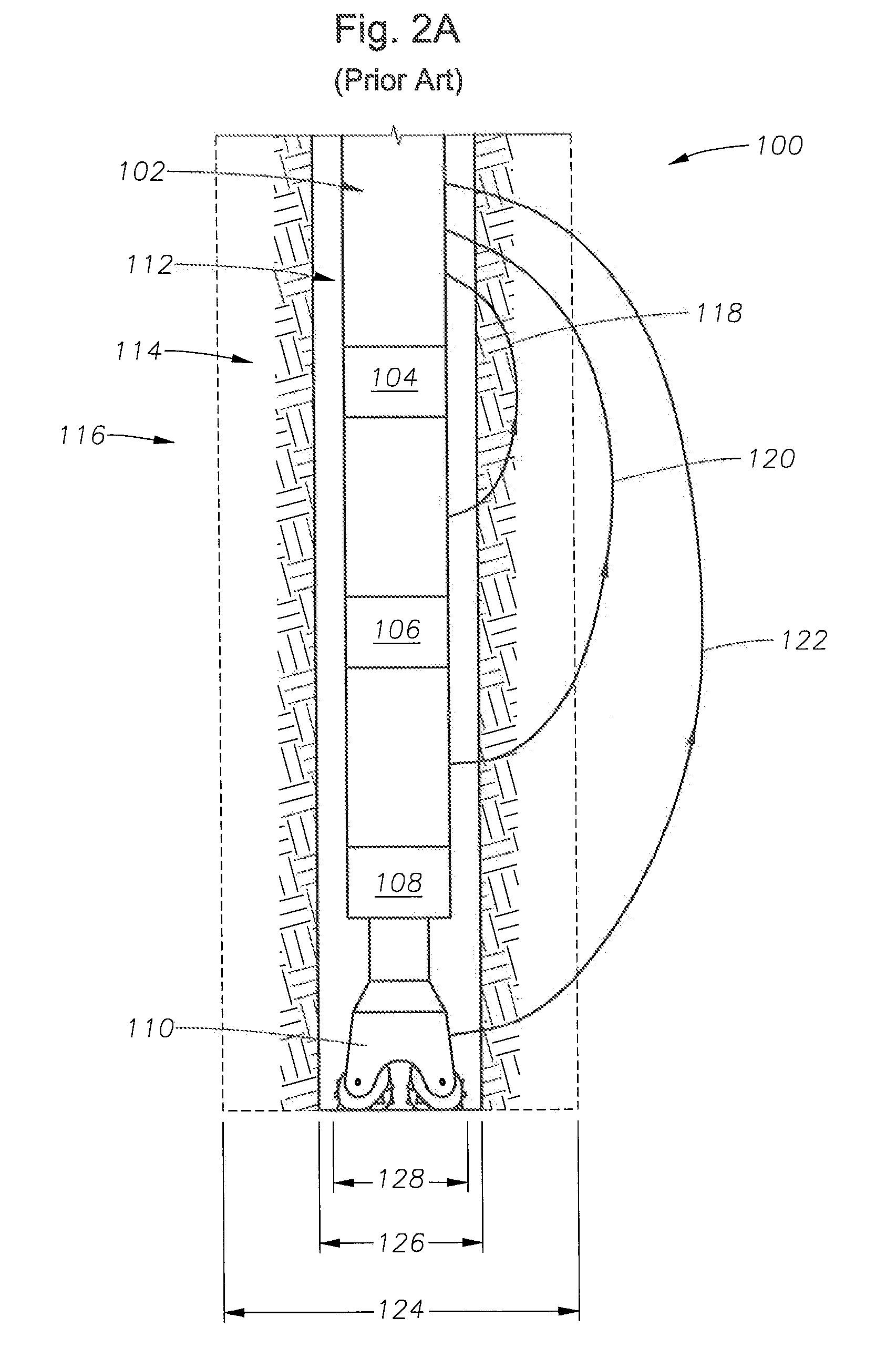Method to detect formation pore pressure from resistivity measurements ahead of the bit during drilling of a well
a resistivity measurement and wellbore technology, applied in the direction of survey, directional drilling, borehole/well accessories, etc., can solve the problems of well loss, fluid overpressure,
- Summary
- Abstract
- Description
- Claims
- Application Information
AI Technical Summary
Benefits of technology
Problems solved by technology
Method used
Image
Examples
embodiment 400
[0040]In accordance with the present disclosure, transient electromagnetic survey techniques and apparatus normally used in marine surveys may be modified to be deployed within a borehole 112, as illustrated schematically in embodiment 400 of FIG. 4. A dipole transmitter 402 is mounted on the drill string behind the drill bit 110, and EM receivers 404 and 406 are mounted below the dipole. The EM receivers 404, 406 measure a normally reflected wave in the axis of the drill string. This normally reflected wave would be off of resistivity contrasts directly in front of the bit. This would work very much like an acoustic VSP but working in the electromagnetic spectrum.
[0041]Another method to make a measurement in front of the bit would be to use modified continuous deep directional electromagnetic measurements. Deep directional electromagnetic (EM) tool measurements are known and explained, for example, in Omeragic et al., “Deep Directional Electromagnetic Measurements for Optimal Well ...
embodiment 800
[0044]FIG. 8 illustrates an embodiment 800 modified to focus energy in front of the bit and measure the formation resistivity ahead of the drill bit. Rather than sensing an oil / water contact, the reflected waves 85 would be reflected off of the top of a hydrocarbon formation 90.
[0045]In accordance with the present disclosure, a primary interest lies in using one or more of the methods and apparatus described above to obtain resistivity measurements in front of the drill bit to make drilling decisions on pore pressure and formation properties in front of the bit before the bit exposes the formation, which as discussed may create undesirable consequences in the well. The skilled operator or designer will determine which method and apparatus is best suited for a particular well and formation to achieve the highest efficiency without undue experimentation.
[0046]The actual calculation of pore pressure from resistivity is straightforward, one method being that described by Hottman et al. ...
embodiment 900
[0055]FIG. 9 illustrates one method embodiment 900 of the present disclosure in flowchart form. First, as indicated in box 902, the drilling supervisor, probably in conjunction with the mud engineer, geologist or other person in charge would choose initial drilling mud, and the driller would choose the drill bit. Apparatus for determining resistivity in front of the drill bit would be selected and installed in the drill string, either on-site or at a site removed from the well. In box 904, drilling is then begun, drilling toward a target formation at a known azimuth and dip angle using the selected drilling mud, drill bit, and resistivity apparatus. Box 906, resistivity data in front of the bit is gathered. Box 908, pore pressure in front of the bit is computed based on the measured resistivity in front of the bit. Box 910, one or more of density, specific gravity, weight, viscosity, water content, oil content, composition, pH, flow rate, solids content, solids particle size distrib...
PUM
| Property | Measurement | Unit |
|---|---|---|
| resistivity | aaaaa | aaaaa |
| angles | aaaaa | aaaaa |
| pore pressure | aaaaa | aaaaa |
Abstract
Description
Claims
Application Information
 Login to View More
Login to View More - R&D
- Intellectual Property
- Life Sciences
- Materials
- Tech Scout
- Unparalleled Data Quality
- Higher Quality Content
- 60% Fewer Hallucinations
Browse by: Latest US Patents, China's latest patents, Technical Efficacy Thesaurus, Application Domain, Technology Topic, Popular Technical Reports.
© 2025 PatSnap. All rights reserved.Legal|Privacy policy|Modern Slavery Act Transparency Statement|Sitemap|About US| Contact US: help@patsnap.com



